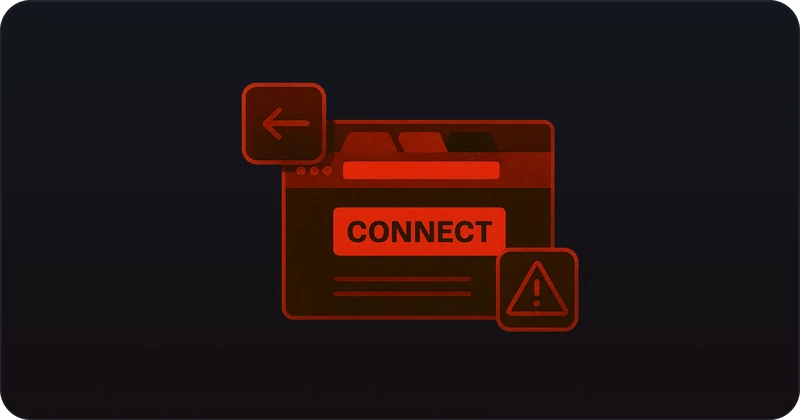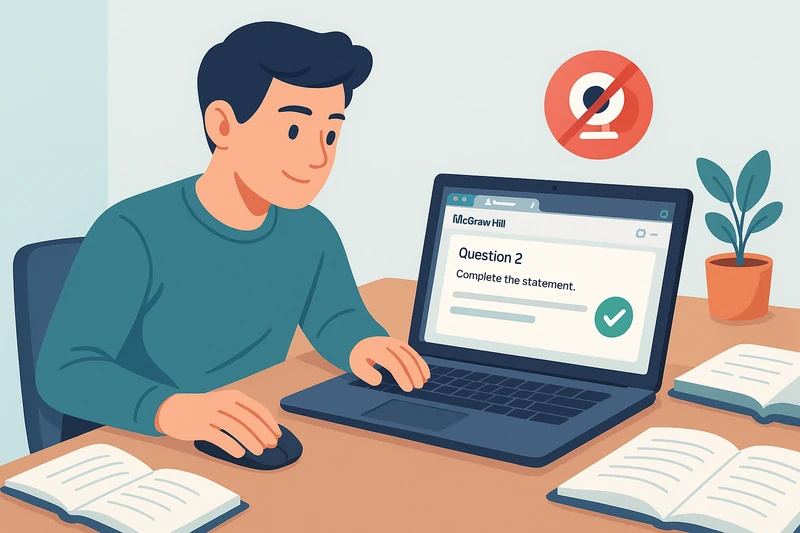Tab Switching on Connect: What Gets You Flagged
A comprehensive guide to understanding how McGraw Hill Connect detects tab switching and flags suspicious behavior, and how to get answers without triggering detection systems.

How McGraw Hill Connect Detects Tab Switching
McGraw Hill Connect uses sophisticated monitoring systems to detect when students switch between browser tabs or windows during assignments. This tab switching detection is one of the platform's primary methods for identifying potential academic dishonesty.
Focus Detection: The platform monitors whether the McGraw Hill Connect tab remains the active, focused tab in your browser. When you switch to another tab or application, the system detects this change and logs it as suspicious activity.
Time Tracking: McGraw Hill tracks how long you spend away from the Connect tab. Frequent or extended periods away from the assignment page can trigger flags and alerts to your instructor.
Pattern Recognition: The system uses algorithms to identify patterns in tab switching behavior. Regular switching between Connect and answer websites, for example, can be flagged as suspicious activity.
What Tab Switching Behavior Gets You Flagged
Understanding exactly what behavior triggers flags helps students make informed decisions about their study strategies. McGraw Hill Connect flags several types of tab switching patterns that suggest potential cheating.
Frequent Tab Switching: Switching between tabs multiple times during a single question or assignment can trigger alerts. This is why many students seek mcgraw hill connect answers that don't require external resources.
Extended Time Away: Spending more than a few seconds away from the Connect tab, especially when combined with quick answer submission, can be flagged as suspicious behavior.
Answer Website Patterns: Switching to known answer websites, forums, or educational resources during assignments is a major red flag. The system can detect visits to sites commonly used for finding connect answers.

Consequences of Getting Flagged
When McGraw Hill Connect flags suspicious tab switching behavior, the consequences can range from minor warnings to serious academic penalties. Understanding these risks helps students make better decisions about their study approach.
Instructor Alerts: Flagged behavior is automatically reported to your instructor, who can review the activity logs and determine appropriate action. This is why students need how to get answers on mcgraw hill strategies that don't trigger detection.
Academic Penalties: Depending on your institution's policies, flagged behavior can result in failing grades on assignments, course failure, or even academic probation. Some schools maintain permanent records of academic dishonesty incidents.
Loss of Trust: Once flagged, instructors may require additional monitoring or proctoring for future assignments, making it even more difficult to use traditional answer resources.
Why Traditional Answer Methods Are Risky
Traditional methods of finding mcgraw hill answers often require tab switching, making them inherently risky in today's monitored environment. Understanding these risks helps students choose safer alternatives.
Answer Websites: Visiting sites like Chegg, Course Hero, or answer forums requires switching away from Connect, which immediately triggers detection systems. This makes these methods extremely risky for getting connect answers.
Search Engines: Using Google or other search engines to find answers requires tab switching and can be easily detected. The time spent away from Connect is logged and can be flagged as suspicious.
Study Groups: While collaborative study is valuable, switching to messaging apps or video calls during assignments can also trigger detection systems, making real-time collaboration risky.

The Perfect Solution: Solve My Book Extension
Solve My Book is specifically designed to solve the tab switching problem. This powerful Chrome extension works directly within McGraw Hill Connect - no tab switching required, no external websites needed, no detection risk.
The extension integrates seamlessly with the McGraw Hill interface, automatically detecting questions and providing instant answers with just one click. Since it operates entirely within the Connect tab, there's zero risk of being flagged for tab switching.
How It Works: Simply click the Solve My Book button that appears directly on your McGraw Hill assignment page. The extension instantly analyzes the question and automatically selects the correct answer - all without leaving the Connect tab or triggering any detection systems.
Whether you're working on homework assignments, quizzes, or practice problems, Solve My Book gives you the exact answers you need with complete safety. No more worrying about tab switching detection, no more risk of getting flagged - just instant, reliable answers with one click.
Benefits of Using Solve My Book
Using Solve My Book instead of traditional answer methods provides numerous advantages that go beyond just avoiding detection.
Zero Detection Risk: Since the extension works entirely within the McGraw Hill tab, there's no risk of being flagged for tab switching, focus loss, or suspicious behavior patterns.
Instant Answers: No more time wasted searching through multiple websites or switching between tabs. Get the correct answer instantly with just one click.
Reliable Results: Unlike answer websites that may have outdated or incorrect information, Solve My Book provides accurate, up-to-date answers specifically for McGraw Hill assignments.
Peace of Mind: Work on your assignments with complete confidence, knowing that you won't be flagged or penalized for using external resources.
